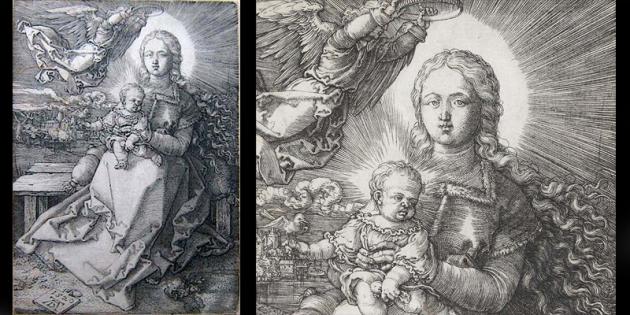A long lost Albrecht Duerer engraving titled “Mary crowned by an angel” dating from 1520 has been returned to the Staatsgalerie Art Museum in Stuttgart. The work disappeared during the Second World War. It was discovered in a French flea market and was in good condition from being stored in a portfolio wrapped in paper.
The bronze engraving was discovered by a retired French archaeologist who discovered the work on a stallholders stand in Sarrebourg in eastern France. The work had come from a house clearance in the town. Aware that this was something special, he bought the piece. On closer examination he discovered the stamp of the Staatsgalerie on the back of the artwork and quickly decided to donate it back to the museum anonymously. The man came “personally with his wife” to return the engraving, which had been missing since the end of World War II, Frankenberger a spokesperson for the museum said.
The museum added that It was owned by a former deputy mayor of Sarrebourg before ending up at the second-hand stall, she said. The museum has not yet decided how to put the engraving on display. “We have to find the right setting to present it in,” Frankenberger stated.
Duerer was born in 1471 in the southern German city of Nuremberg he was a painter, printmaker and theorist of the German Renaissance. He established his reputation and influence across Europe, when he was still in his twenties, due to his high-quality woodcut prints. Duerer was aware of the major Italian artists of his time, including Raphael, Giovanni Bellini and Leonardo da Vinci, and from 1512 he was patronised by emperor Maximilian I. His vast body of work includes engravings, his preferred technique in his later prints, altarpieces, portraits and self-portraits, watercolours and books. The woodcuts, such as the Apocalypseseries (1498), retain a more Gothic flavour than the rest of his work. His well-known engravings include the Knight, Death, and the Devil (1513), Saint Jerome in his Study (1514) and Melencolia I (1514), which has been the subject of extensive analysis and interpretation. His watercolours also mark him as one of the first European landscape artists, while his ambitious woodcuts revolutionized the potential of that medium.

